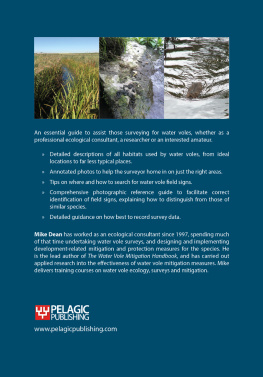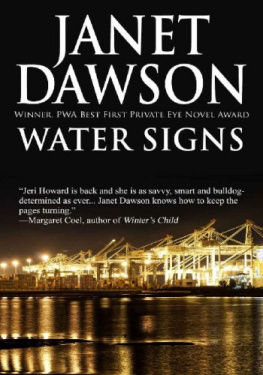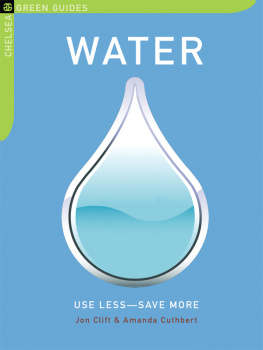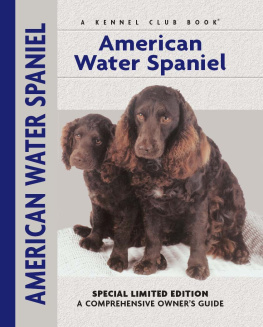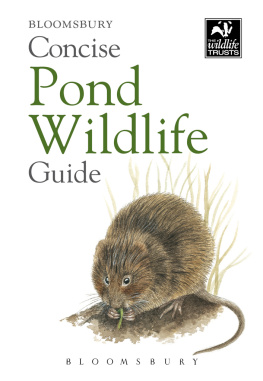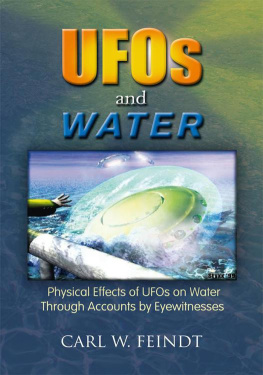
Water Vole Field Signs and Habitat Assessment
Water Vole Field Signs and Habitat Assessment
A PRACTICAL GUIDE TO WATER VOLE SURVEYS
Mike Dean
Pelagic Publishing | www.pelagicpublishing.com
Published by Pelagic Publishing
PO Box 874
Exeter
EX3 9BR
UK
www.pelagicpublishing.com
Water Vole Field Signs and Habitat Assessment: A Practical Guide to Water Vole Surveys
ISBN 978-1-78427-254-8 (Pbk)
ISBN 978-1-78427-255-5 (ePub)
ISBN 978-1-78427-256-2 (ePDF)
Copyright 2021 Mike Dean
The moral rights of the author have been asserted.
All rights reserved. Apart from short excerpts for use in research or for reviews, no part of this document may be printed or reproduced, stored in a retrieval system, or transmitted in any form or by any means, electronic, mechanical, photocopying, recording, now known or hereafter invented or otherwise without prior permission from the publisher.
A CIP record for this book is available from the British Library
All photographs Mike Dean unless otherwise stated.
Cover images: Main image: Water vole Simon Booth Photography.
Other images (left to right): Optimal water vole habitat provided by the River Coln in Gloucestershire; water vole feeding remains; water vole burrow. All photos Mike Dean.
Back cover images: Optimal water vole habitat provided by a drainage ditch in Kent Mike Dean; water vole latrine Mike Dean; water vole swimming Jo Cartmell.
For Xander and Jessica
Contents
I must start by thanking Merryl Gelling and Robyn Stewart, both experienced ecologists with considerable expertise on water voles. They were kind enough to review an early draft of this book, and it is much improved as a result of their insightful comments.
This was always intended as a pictorial guide, and it is necessarily reliant on good-quality images. I am therefore incredibly grateful to all those who have kindly allowed me to use their photos in this book: Simon Booth (Simon Booth Photography), Jo Cartmell (NearbyWild), Coral Edgcumbe, Derek Gow, Gareth Harris, Magnus Johnson, Kevin OHara, Stefanie Scott and Robyn Stewart. Thank you also to Hugh Brazier, who skilfully edited my initial text, and to BBR Design who have patiently turned the text and the jumble of photos that I sent into this book.
I am forever indebted to Rob Strachan. Without his knowledge of water voles, his willingness to share this knowledge, and his passion for their conservation, I wouldnt have been able to write this book. Im therefore delighted to have been granted permission to reproduce his drawings of water vole and rat footprints, taken from his book Water Voles, and Im grateful to Jane Sedgeley-Strachan and Whittet Books for giving me consent to do so.
As I sit down to write this book, the water vole ( Arvicola amphibius, previously A. terrestris) has been a protected species in the United Kingdom for more than 20 years, and has been identified as one of the UKs most rapidly declining mammals for over three decades. And its probably fair to say that over those last 2030 years theres been a significant amount written about this species. What else, you may reasonably ask, is there left to say?
The level of attention that the water vole has received in recent times also means that many professional ecologists and amateur naturalists will have had the opportunity to undertake, or get involved in, a water vole survey. They may have recorded its field signs or even seen the animal itself. Why then, do we need another book on this species?
Well, the answer is this: water voles are still declining and the number of water voles in the UK is predicted to continue falling (Mammal Society 2018). There is an increasing need for action to conserve them, and an urgent necessity for them to be considered appropriately in the context of development projects. And this means that surveys must not only be carried out, but done well. Over the years that Ive been working on water voles, Ive come across many situations where this hasnt been the case where surveys have failed to spot their presence, perhaps because the animals were using habitat that the surveyor assumed they wouldnt, or because the field signs were interpreted incorrectly. This can be costly for a developer, if the failure occurs during a survey to inform a planning application, for example, or could even result in a prosecution if the mistake isnt spotted in time. On the other hand, in some cases, it may never come to light. But irrespective of the scenario in which it happens, or the reasons for it, the main loser is the water vole. Important protection measures may not be put in place, appropriate management activities may not be undertaken, and conservation efforts may not be directed to the correct locations.
Next page
